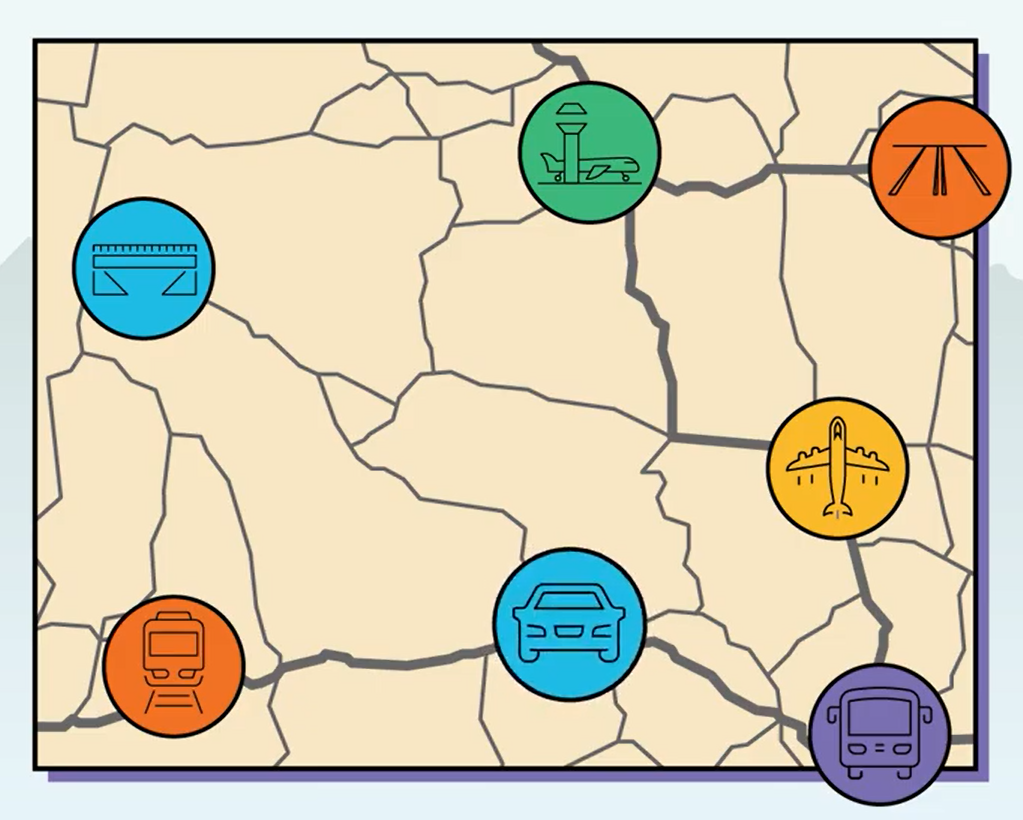Wyoming Coal Production Seeing Modest Bump After Dismal 2020
Written by Associated Press on August 10, 2021
GILLETTE, Wyo. (AP) — Given the choice of what to hear first, good news or bad news, Powder River Basin coal producers and the thousands of people who work the mines are used to asking for the good news only to be told there is none.
Five years of working through a historically swift decline, thermal coal regions like Campbell County and the PRB have settled for most of the mines still operating at any level as the best news they could reasonably hope for.
Now for the first time in nearly six years, when electing to hear the good news first, PRB producers are reporting increased production, lower costs and that the mines are profitable.
Overall, a 6% increase in production for the first half of 2021 for the basin’s 12 Campbell County mines may not seem like much. Going from 101.85 million tons through the first half of 2020 to 107.9 million this year isn’t enough to be considered a trend, jump or leap. But as the nation’s economy continues to emerge from the COVID-19 pandemic that’s lingered for nearly 18 months, it’s a welcome reprieve from the 22.5% decline thermal coal saw last year.
With natural gas prices also rising above $4 and the pandemic rebound, it was expected there would be more of a leveling off for a beleaguered thermal coal industry, said Robert Godby, a leading energy economist and interim dean of the University of Wyoming College of Business.
“This is exactly what we expected,” he told the Gilette News Record. “As the economy recovers, we knew this was coming. But even (to this level) has kind of surprised us. Originally, we though it might be a one-year jump and then moderate, but now it’s looking like coal could maintain this pump through a good chunk of next year.”
Other experts agree, with the federal Energy Information Association projecting that by the end of the year, coal production will increase by 15% over 2020 levels. That also could result in some idled U.S. coal mines reopening.
That would be good news for the Powder River Basin, which produces 43% of all coal mined in the United States.
It’s not enough to believe coal could rebound to pre-2016 levels, but it is good short-term news for Wyoming and Campbell County, Godby said.
Leading the way are the two largest and only publicly traded producers in the basin, Peabody Energy Inc. and Arch Natural Resources. Their five mines produced about 70 million tons in the first half of 2021, or about 35% of the basin’s overall production, according to the federal Mine Safety and Health Administration. They also employ 2,383 of the basin’s overall 3,816 coal employees, or 62%.
“Both companies reported their costs went down, their revenues are up, their volume is up and the market looks like it’s going to be strong into the fall and winter,” Godby said. “They have a lot of momentum and it’s likely they can keep going through the fall.”
Also working in the short-term favor of thermal coal is that natural gas prices have remained high enough to entice power companies to resume burning coal, he said. That has led to a draw down of some stockpiles at power plants, which means they may order more coal to replenish those stockpiles.
“This is good news,” Godby said. “It means that, for now in places like Gillette, they’re hiring people back. It’s a bit of a reprieve. Coal is still going to decline, but it’s not going to decline to zero anytime soon.”
He also points out that the bump for coal also is a bump for what’s been a seriously strapped Wyoming state budget, which relies on energy for the bulk of its funding.
While still not out of the woods, “The state budget picture is not nearly as dire as we expected even six months ago,” Godby said.
Perhaps as important as the bottom line showing a little black for a change instead of perpetual red is the impact a couple of positive financial quarters can have for the outlook of Wyoming residents, he said.
A grain of salt
While 2021 may go down as a decent year for coal in the PRB, there’s no question this year isn’t a turnaround or launching point for another run for thermal coal in the United States, Godby said.
Arch and Peabody both had their second quarter earnings call last week, and while the numbers were positive, the long-term message was still clear, with Arch, which continues to hold the line on its intent to get out of mining thermal coal and the Powder River Basin.
In fact, it’s openly calling the strategy for its Black Thunder and Coal Creek mines a “cash harvest,” meaning it is making enough money to provide the company some cash and pay for its own reclamation obligations.
“Cash harvesting is an honest way to put it,” Godby said. “Metallurgical coal is basically benefiting the most from the (pandemic economic) recovery and the high value of steel. And on the thermal side, you see international prices being solid.
“Arch is being very clear that this is a short-term phenomenon and they’re more than happy to take the cash.”
On the other side is Peabody, which seems to be riding out Arch’s accelerated efforts to leave the PRB. With Arch out of the way, Peabody would be the only big dog left in the kennel.
“In the PRB, with Black Thunder signaling that it’s willing to back out, it really does suggest that North Antelope Rochelle (Peabody’s flagship mine) may still have some life left to provide cash. NARM is going to be the strongest mine in all that,” Godby said.
Other signs
While this year seems more stable for PRB coal, it may not last much past 2021, according to the Energy Information Administration. Two reports the agency released last week show how coal continues to decline in the overall portfolio of U.S. power generation.
The number of producing mines for all types of coal fell to 551 last year, the lowest number since production peaked in 2008. While the report doesn’t break out how many were thermal mines, most were.
Overall, the 151 shuttered mines last year represent an 18% drop and a large part of an overall 62% decline in coal mines since 2008.
“A comparable drop in producing U.S. coal mines happened in 2016 at 17% when producers faced challenging market conditions that resulted in numerous bankruptcies and industry consolidation,” according to a July 30 EIA report. “The declining number of new mines in recent years reflects reduced investment in the coal industry in the United States, less demand for coal internationally and less demand for coal in the U.S. electric power sector.”
Along the way, renewable sources of energy continue to gain more of a foothold in the U.S. power generation picture. For the first time, renewables moved up the ladder to the No. 2 spot of electricity producing sectors at 21% in 2020, just beating out nuclear at 20%. Now a close No. 4 on the list is coal at 19% last year. Outpacing all at No. 1 is natural gas, which accounts for 40% of the nation’s electricity.
Because of a significant hit to thermal coal from the pandemic, the EIA expects the small rebound in 2021 will put coal back to No. 2 this year, but not by much.
“We expect coal-fired electricity generation to increase in the United States during 2021 as natural gas prices continue to rise and as coal becomes more economically competitive,” according to a July 28 EIA report. “Based on forecasts in our short-term energy outlook, we expect coal-fired electricity generation in all sectors in 2021 to increase 18% in 2021 and 10% in 2022.”
More time to plan
In the meantime, the rest of the PRB has a little extra time to plan for when coal begins to decline again, Godby said.
While the EIA reports that 62% of active coal mines since 2008 have closed, the Powder River Basin has been almost immune. So far, the basin has seen only one mine closure, the Decker mine in Montana, which closed in December as part of a bankruptcy by its parent company, Lighthouse Resources.
Arch Resources has its Coal Creek mine on track to be the second PRB mine to be shut down and 80% reclaimed by the end of 2022. Arch also has announced it’s accelerating the closure process of Black Thunder unless a buyer for the mine emerges.
That type of contraction is overdue in the PRB, Godby said, adding that it’s simple math that the same 12 mines can’t afford to keep taking smaller slices of the same pie.
Since 2014 when the PRB mines produced 381.8 million tons of coal, production dropped by 46% by the end of 2020, when 206.9 million tons were mined.
While nobody wants to see mines close, the reality is that contraction will make the mines that are left stronger and more stable even as coal remains an important part of the domestic energy picture, if no longer dominant, Godby said.
“People have been kind of dying for some good news,” he said.
And for now, Wyoming’s coal industry will welcome any good news it can get.




